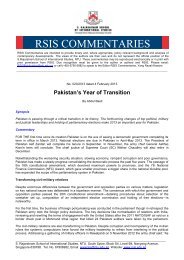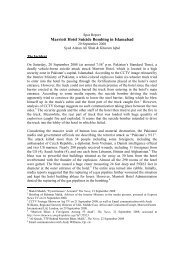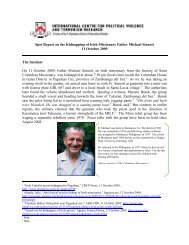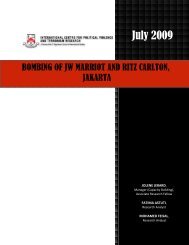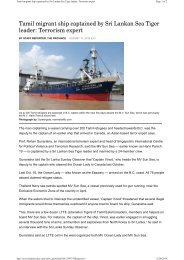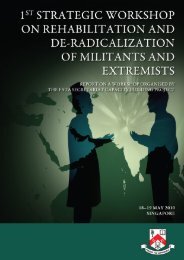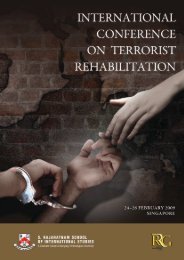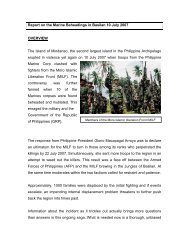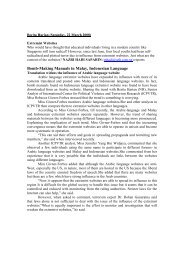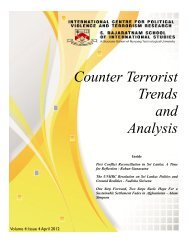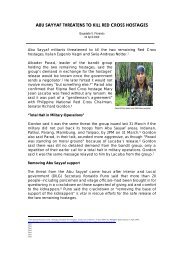Peace and Security Review, Vol.1 No. 2 - International Centre for ...
Peace and Security Review, Vol.1 No. 2 - International Centre for ...
Peace and Security Review, Vol.1 No. 2 - International Centre for ...
Create successful ePaper yourself
Turn your PDF publications into a flip-book with our unique Google optimized e-Paper software.
Dr. Harrison Aviation <strong>Security</strong> 111<br />
have both a tactical <strong>and</strong> strategic analysis capability addressing industry<br />
specific needs.<br />
The final level of analysis is the tactical level. This is dealing with the<br />
increasing threat presented by the self-organized, self-radicalized <strong>and</strong> selfoperationalized<br />
cells, illustrated by the recent plots against Fort Dix <strong>and</strong> JFK.<br />
The general record against this threat is mixed. There are far more of these<br />
cells so the threat is greater, but the risk thy pose is substantially less, as they<br />
are more limited in their access to funding <strong>and</strong> training so there skills are<br />
reduced. They are thus more likely to conduct London or Madrid style<br />
operations rather than 9/11. They still pose a potential threat to aviation as it<br />
is relative simple to hijack an aircraft <strong>and</strong> a bit more complicated to introduce<br />
an explosive device. As this is the emerging trend the industry can use the<br />
space to address existing weakness <strong>and</strong> develop a coherent proactive strategy<br />
to deal with current <strong>and</strong> emerging threats.<br />
Tactical<br />
• Develop <strong>and</strong> implement a more coherent tactical response.<br />
• Regular <strong>and</strong> realistic training is required.<br />
• Assist in developing economically viable responses across the system.<br />
The two critical elements in the first recommendation are staff <strong>and</strong> training.<br />
The industry must be involved again in its own security. This may require in<br />
put in recruiting <strong>and</strong> training the proper staff. It also requires all staff in the<br />
industry to recognize their role in security <strong>and</strong> that they are empowered to<br />
act on their concerns. Staff must underst<strong>and</strong> their operational environment<br />
<strong>and</strong> what aspect can easily be turned into a defensive tool in the event of an<br />
incident. For example, if there is an attempt to hijack an aircraft the cabin<br />
crew must recognize that they have a non-lethal weapon readily available to<br />
disrupt an attacker. Coffee, ideally hot. Armed guards <strong>and</strong> self-defense are<br />
useful, but unless there are going to be regular sessions in the gym the likely<br />
hood of a martial arts approach working is limited. Using coffee or the food<br />
cart is much more effective in disruption of an operation.<br />
The above illustrates why training is important. The underst<strong>and</strong>ing of<br />
how an event will take place <strong>and</strong> how to respond is not intuitive, but can be<br />
learned. It is believed that the first 5 to 7 seconds in a hostage or other type of<br />
attack is the most critical. Hoe one responds may determine the outcome <strong>for</strong><br />
both the individual <strong>and</strong> all involved.<br />
Any security program must be economically viable. This seems to be<br />
common sense, but to frequently it is not. As can be illustrated with the<br />
debate over the protection against MANPADS, the economic cost is prohibitive<br />
<strong>Vol.1</strong>, <strong>No</strong>.2 2008 pp.95-114




